Teaching in courses:
Research Group
Magnetic Resonance by Optics
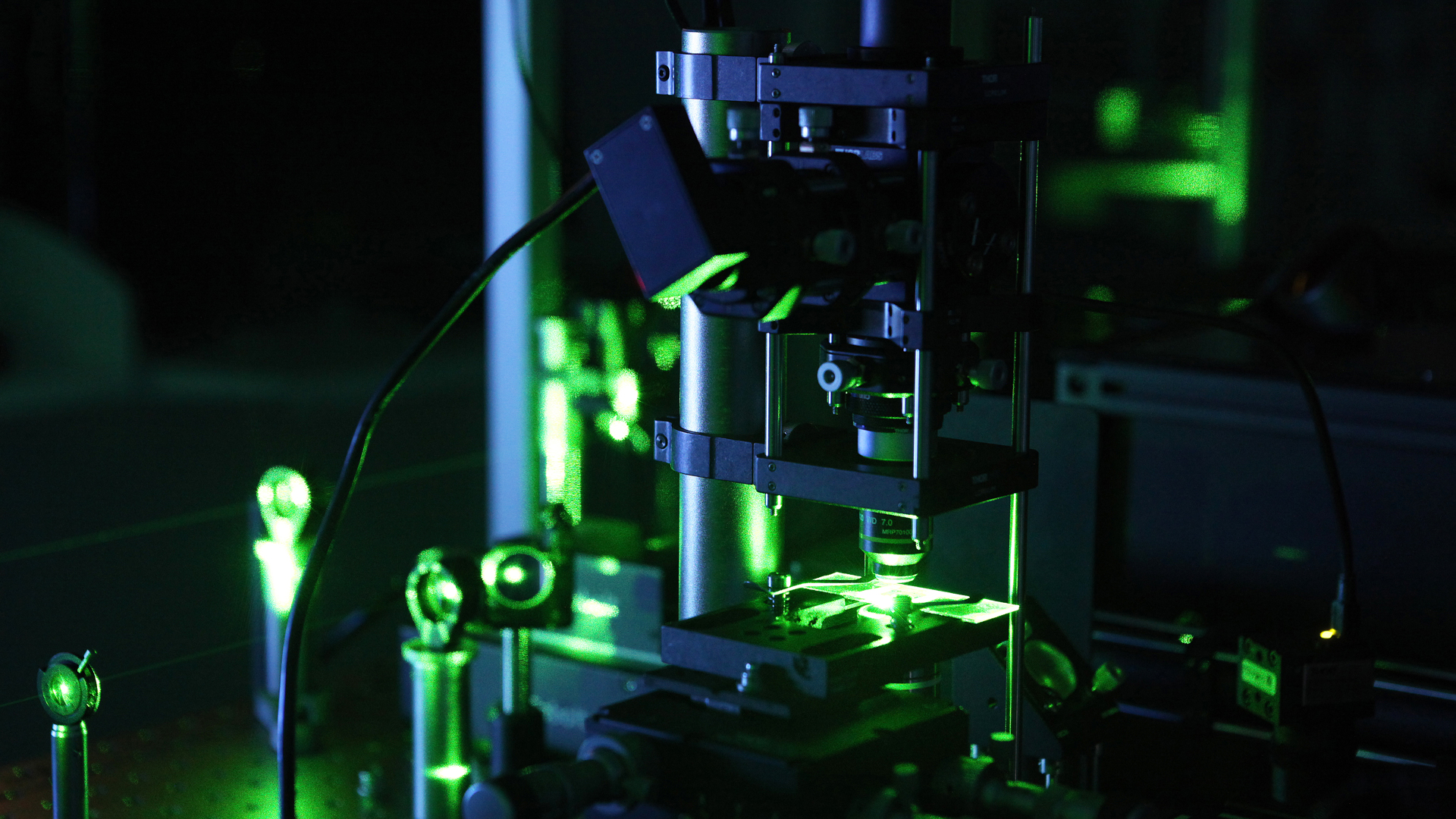
Group leader: Kirstine Berg-Sørensen
We do bio-sensing with color-centers in diamond.
In one line of research, we study the linkage between intracellular mechanics and biochemical properties within the cell, for example through signaling evidenced by free radicals. The former is measured by means of optical trapping, the latter by means of so-called T1-relaxometry, inspired by traditional NMR methodology. We can use both methods at once since in both cases, the probe particle is a nanodiamond with embedded color centers, so-called NV-centers. The nanodiamonds are typically around 50-120 nm in diameter and are naturally engulfed by the single cells which we study.
In another line of research, we explore biosensing with diamond crystals enriched by a surface layer of NV-centers and position the biologically relevant object on top of the crystal.
In both cases, our ultimate target is to do nanoscale-NMR on or inside cells by means of the NV-centers in either the nanodiamonds or the diamond crystal. We are driven by method development for a deeper understanding of details of cellular life.

Ongoing research projects
Nanodiamond sensing in single cells
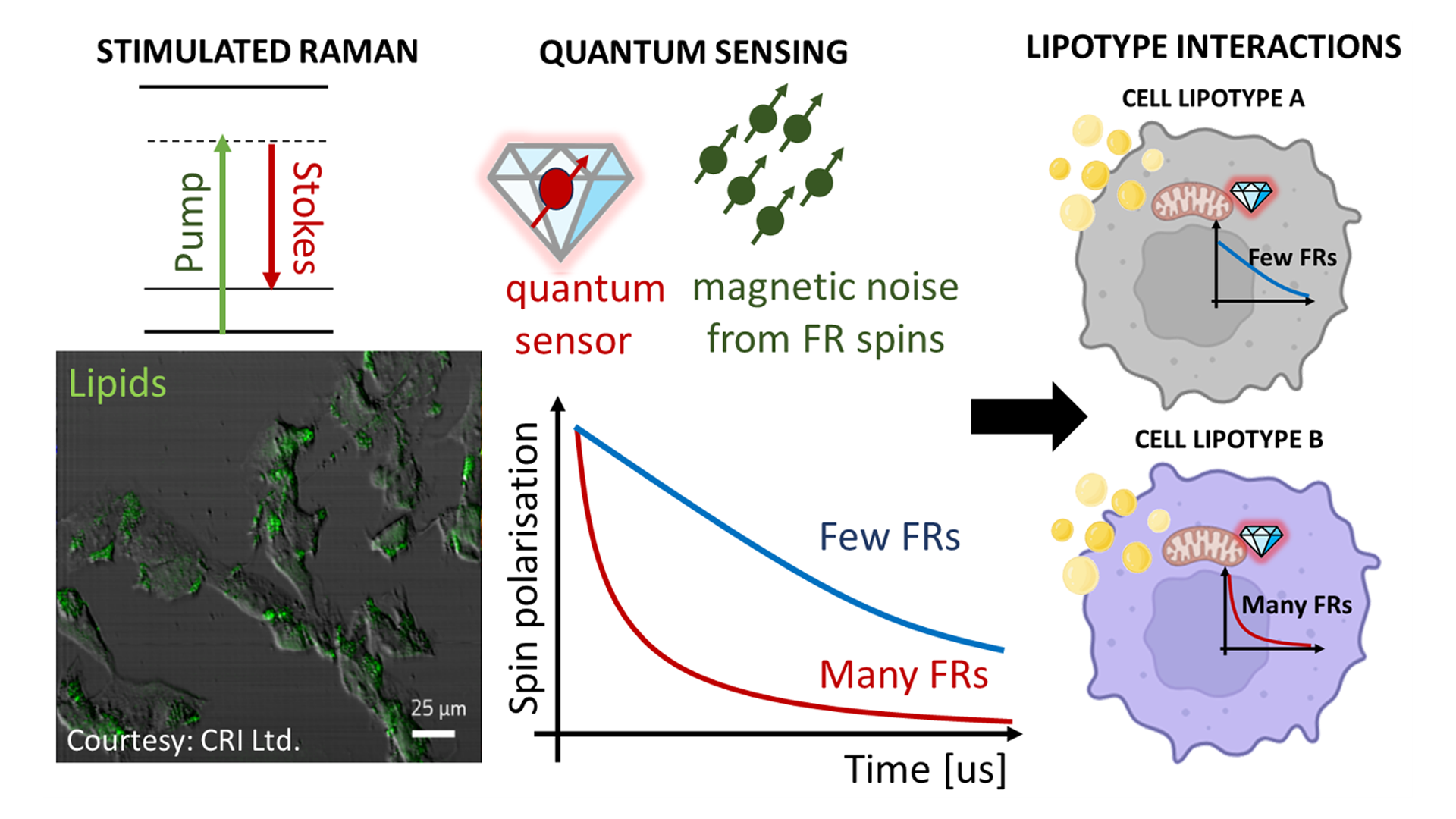
The project aims to combine Raman imaging of lipids with quantum sensing inside or with live cells, to correlate lipid metabolism with free radical generation.
Intracellular mechanics and nanodiamond sensing
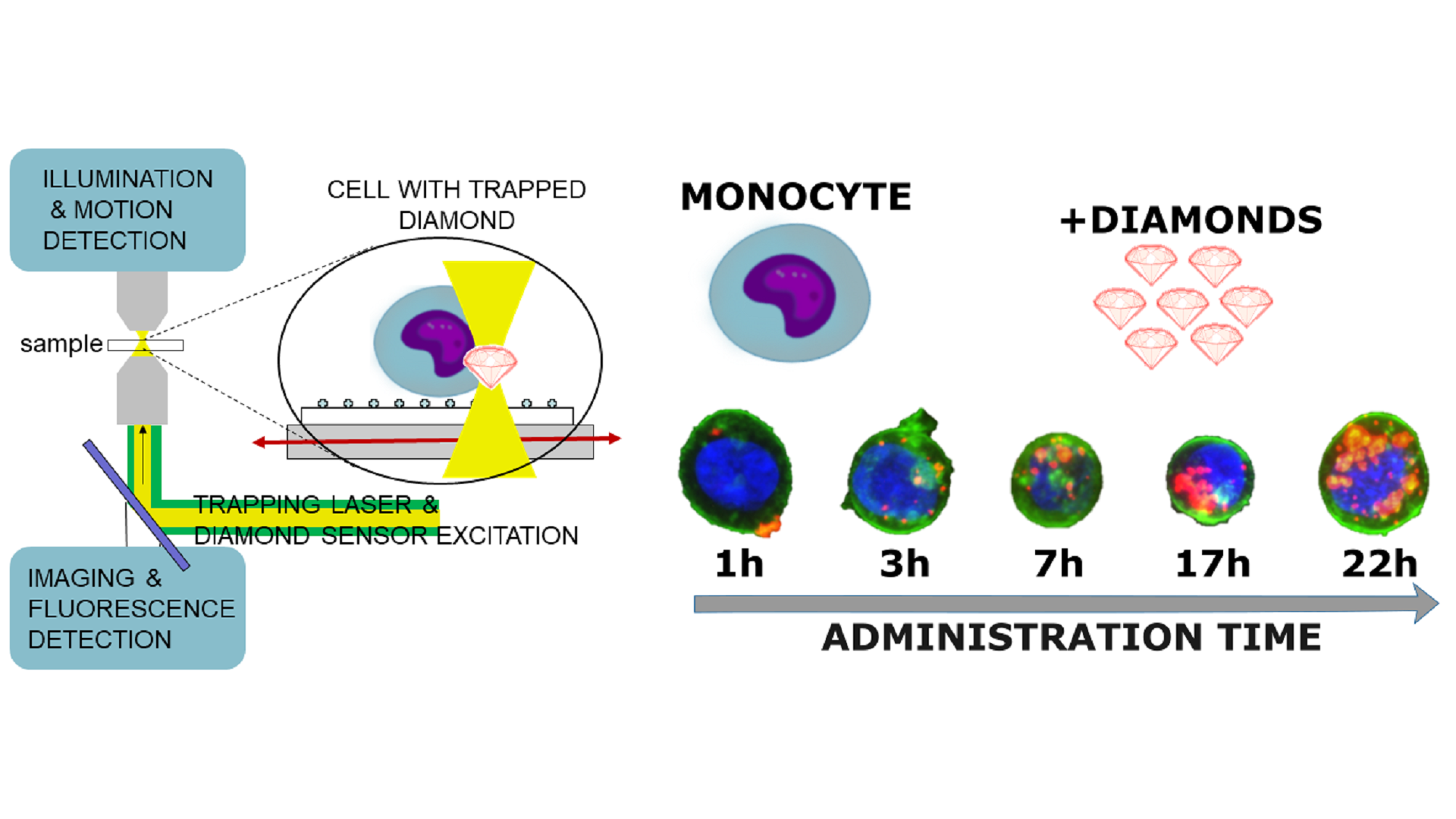
The project aims to demonstrate simultaneous sensing of viscoelastic properties of the cellular cytoskeleton along with intracellular diamond sensing. The project is interdisciplinary as it involves aspects ranging from instrument and assay development to quantitative single cell biology..
Sensing free radicals in the scarred hearts
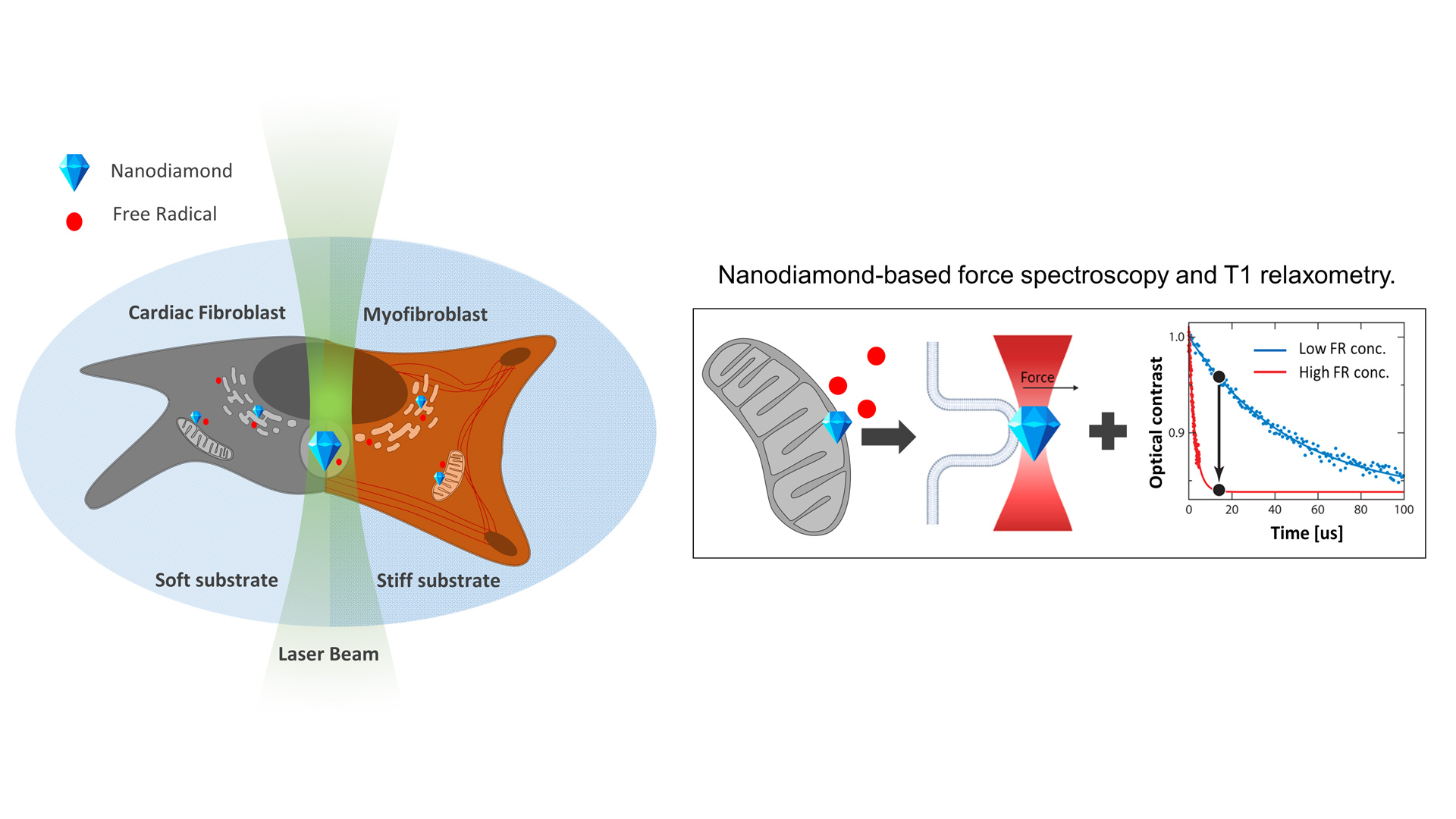
Micron-scale NMR with NV centers in diamond and enhanced by dDNP-hyperpolarization
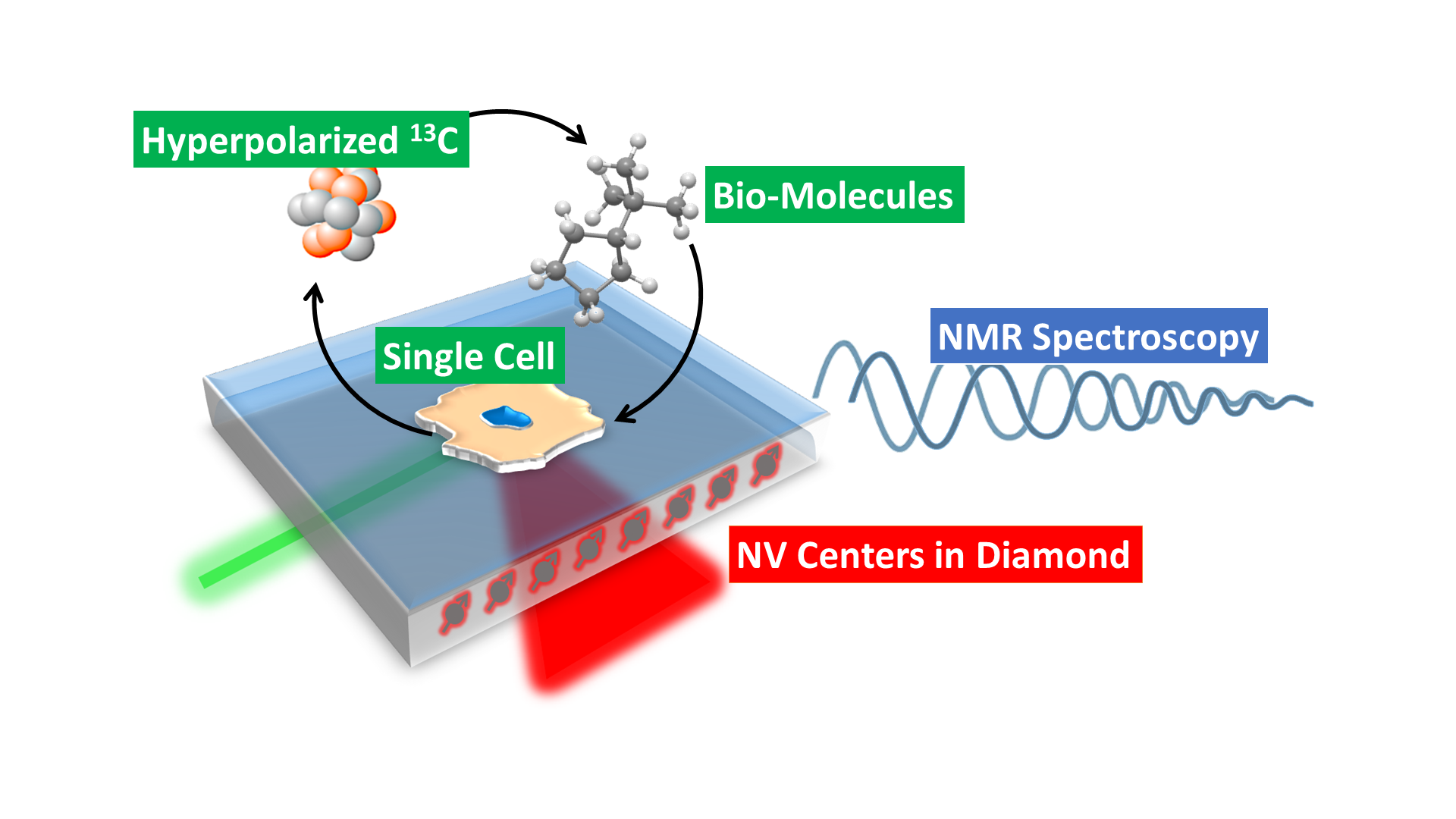
Cell metabolism at the micron scale
The project aims to develop micron-scale NMR by means of NV centers in a diamond crystal, and enhance the NMR signal with dissolution DNP. The ultimate goal is to use the equipment which we develop for studies of metabolism in single cells.
Group Leader
Kirstine Berg-Sørensen Groupleader, Associate Professor Department of Health Technology Mobile: +45 22275868 kibs@dtu.dk
At DTU Health Tech, she focuses on experimental work to couple biophysics and optical trapping in biological systems with quantum sensing by means of color centers in diamonds. These activities have received support from the Carlsberg Foundation, the Independent Research Fund Denmark, and the Novo Nordisk Foundation. Further, her lab hosts experiments to develop NMR spectroscopy with color centers in diamond and enhanced by dissolution DNP. This work is supported by an ERC Synergy grant (headed by a colleague in the Department). Additional funding to the group is provided by a Marie Curie COFUND postdoc grant.
Apart from her research activities, Kirstine Berg-Sørensen is an active teacher and has at DTU served as Head of Studies for the MSc education in Physics and Nanotechnology.
Collaborators:
- Margaret Ahmad, Sorbonne University
- Stephan Wenkel, Umeå University
- Sotirios Kampranis, University of Copenhagen
- Alexander Huck, DTU Physics
- Nir Bar-Gill, Hebrew University
- Fedor Jelezko, Uni Ulm
- Romana Schirhagl, Uni Groningen
- Johan Ulrik Lind, DTU Health Tech
- Giovanni d'Angelo, EPFL
- Alicia Lundby, Uni Copenhagen

